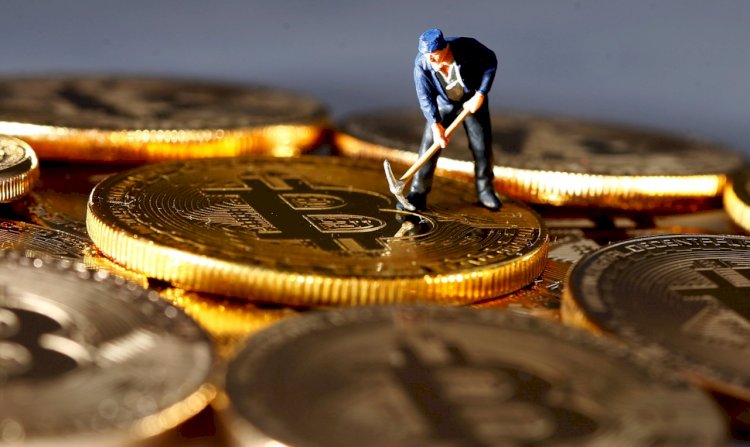A Write-Up On How Bitcoin Mining Works- Part 1
In the world of crypto tokens, Bitcoin mining is an important step ahead for developers. This is a series explaining various factors involved in Bitcoin mining. The explanation comes with valid examples to get the idea to developers and miners.

What is Bitcoin Mining?
The recent developments in cryptocurrency make the mining painstakingly costly and only sporadically rewarding where mining has a magnetic appeal for many investors who are interested in cryptocurrency and subsequently for that fact miners having been rewarded for their work with crypto tokens. This comes mainly as a result of entrepreneurial types seeing mining as pennies from heaven similar to Californian gold prospectors’ in1849. So why not do it if you are technologically inclined.
Before you invest the time and equipment however choose if mining is really for you as the focus is primarily on Bitcoin. With the prospect of being rewarded with valuable Bitcoin, tokens are the primary draw for many Bitcoin miners. It is not necessary to be a miner to own cryptocurrency tokens as you can also buy cryptocurrencies using fiat currency while trading it on an exchange similar to Bit stamp using another crypto and earning it by playing video games or publishing blog posts on the platform that pay users in cryptocurrency. Steemit which is kind of like Medium is an example except that users reward bloggers by paying them in a proprietary cryptocurrency called STEEM. This is then traded elsewhere for Bitcoin.
Motivating people to assist in the primary purpose of mining the Bitcoin reward that miners receive is an incentive to support, legitimize and monitor the Bitcoin network and its blockchain. As these responsibilities come spread among many users all over the world, Bitcoin is said to be decentralized cryptocurrency where one does not rely on a central bank or government to oversee its regulation.
What Coin Miners Do
For their work as auditors, miners are getting paid as they do the work of verifying previous Bitcoin transactions with the convention meant to keep Bitcoin users honest and by verifying transactions, miners help prevent the double-spending problem.
A scenario in which a Bitcoin owner illicitly spends the same Bitcoin twice is known as double spending whereas with the physical currency that isn’t an issue as you hand someone a $20 bill to buy a bottle of vodka as you no longer have it and there’s no danger you could use the same $20 bill to buy lotto tickets next door. However, the digital currency is explained as with a risk that the holder could make a copy of the digital token while sending it to a merchant or another party retaining the original.
As an example, consider that you had one legitimate $20 bill as well as one counterfeit of the same $20. If ever you try to spend both while someone took the trouble of looking both of the bill’s serial numbers, it would seem that they were the same number and thus one had to be false. In such a case what a Bitcoin miner does is also analogous to that where they check transactions making sure that users do not legitimately try to spend the same Bitcoin twice which isn’t a perfect analogy
To explain in detail, once a miner comes with a verified1MB worth of Bitcoin transactions known as a block, the reward that the miner is eligible to be a quantity of Bitcoin. Set by Satoshi Nakamoto, this 1MB limit is a matter of controversy with some miners believing the block size to be increased accommodating more data that would effectively mean that Bitcoin network processes and verifies transactions more quickly.
It is important to verify that 1MB worth transactions make the coin miner eligible to earn Bitcoin where not everyone verifies transactions to get paid out. Theoretically, 1MB of transactions can be as small as one transaction or several thousand depending on how much data the transactions take up.
Where verifiyng1MB worth transactions making the coin miner eligible to earn Bitcoin, not everyone verifying transactions will get paid out .theoretically 1MB of transactions can be seen as small as one transaction or several thousand depending upon how much data the transactions take up is seen by the miners. So it is correct that after all the verifying transactions work it still does not get any Bitcoin for it.
Two conditions are to be met to earn Bitcoin where one is a matter of effort and another is a matter of luck.
The easy part is that you have to verify ~ 1 MB worth of transactions
The other part is where you have to be the first miner to arrive at the right answer to a numeric problem as the process is known as proof of work.
What Does ‘The Right Answer To A Numeric Problem' Mean?"
There is good news still as no advanced math or computation is involved and you have heard miners solving difficult mathematical problems which are not exactly true .the the main objective is to be the first miner to come up with a 64- digit hexadecimal number less than or equal to the target as basic guesswork.
While the bad news is that its guesswork where the total number of possible guesses for each of the problems being on the order of trillions comes as incredibly arduous work .miners to solve the problem first needs a lot of computing power and to mine successfully it needs to have a high hash rate measured in terms of megahashes per second, gigahashes per second and terahashes per second. This comes as a large number of hashes. The site Cryptocompare offers a helpful calculator as you want to estimate how much Bitcoin you could mine with the mining rig’s hash rate.
To Be Continued…
This discussion further involves many details required for mining Bitcoin. The following posts explain them in all possible terms.
What's Your Reaction?



















